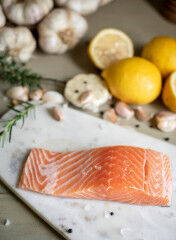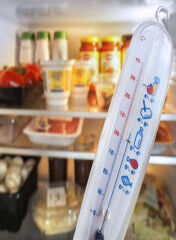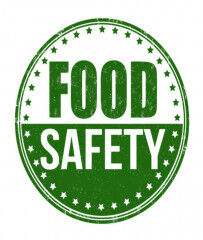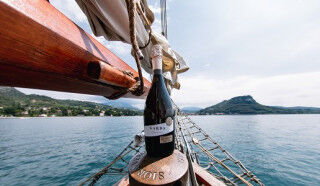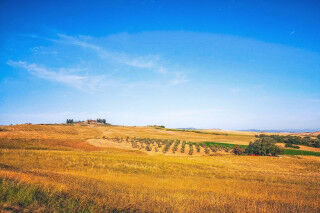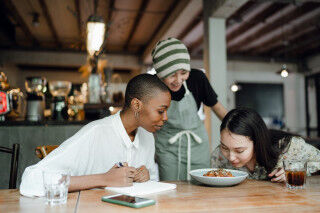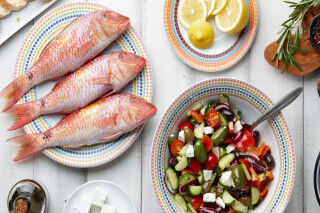People often choose to stubbornly ignore this fact, but let’s face it: sometimes we don’t feel so great after eating lunch or dinner. More often than not, an allergy is blamed, or possibly a dietary intolerance. However, the likely culprit instead is a mild form of food poisoning caused by poorly preserved food.
When faced with this uncomfortable truth, people deny the obvious - bad food? In my house? Impossible!
In the meantime, what’s one summertime ingredient Italians put on their table all the time? Mozzarella, you guessed it! Check out one recipe here, and all about what makes Mozzarella so amazing here, Mozzarella: a Mediterranean Cheese Sought the World Over!
Yet, in order to feel the negative effects of badly stored food, you hardly need to get as serious as the NAS-led raids (the Italian Nuclei Antisofistacazioni e Sanità, the police department responsible for investigating food safety and fraud) shown on local Italian scare-shows.
Imagine taped images of restaurants with mouse droppings littering professional kitchens, or frozen foods inside freezers that look ancient enough to have been around during the European wars.
Not to mention endless scenes of cockroaches and other kitchen horrors - no, food safety doesn’t have to be nearly as dramatic as these perfect-for-TV moments.
Who might be one chef not making these food safety mistakes? To soothe your mind after this reading, make sure to check out the reassuring profile of Italian pro-chef Antonia Klugman, Clear-Cut Simplicity: The Impeccable Antonia Klugmann.
LEARN WHAT MAKES BACTERIA SO QUICK TO LIVE
Food-borne bacteria are resourceful creatures, and can and do proliferate as soon as opportunity strikes. Imagine how happy they are in the summertime heat. Fragile, delicate foods need just a few minutes at overly heated temperatures to take a turn for the worse.
DEFROST IN SAFETY
However anecdotal my experiences may be, I have rarely seen anyone properly thaw a frozen food. I’ve seen endless numbers of people take frozen meat, and thaw it out in the kitchen sink, possibly placed underneath a flow of water. So wrong!
Foods stored in the freezer must defrost safely in the fridge, an exercise of extreme patience if ever there was.
GRILLING GLORIES
Bringing us to another seasonal minefield: barbecues. Germaphobes like me, although I’m not truly a germaphobe in reality - I’d much rather catch a common cold than get food poisoning, which I’ll bet is preferable to you as well.
Barbecue season sees me sitting in the Vegetarian corner, where I safely enjoy my grilled eggplant and zucchini with joy and ease. But here, we’ve got a double set of problems to look at.
Let’s start with meat temperatures. Burgers should ideally reach an inner temperature of 70ºC, whereas large cuts of meat like roasts and steaks should reach at least 60ºC in the middle of the cuts. While you might not want to admit it, grilled tofu beats overcooked meat any time, any place.
Poultry should instead reach 75ºC inner temperature.
If you’ve got doubts about how you’ve been barbecuing, invest in a digital meat thermometer and get grilling in safety.
Barbecuing not your thing? Try ribs baked in the oven - a true Tuscan treat! A quick prep time in the Oven-baked Pork-Ribs - Rosticciana recipe ensures happy bellies all around your table!
MARINATING MISHAPS
Now, let’s look at marinades. Sauces and marinades where raw meat has been wallowing and absorbing flavors should not be used to dress or season cooked foods. If the marinade looks tempting to dress and use as a condiment, simply set aside some sauce before you add raw meat and use that to dress your dishes.
Dishes and knives used to cut raw meats, as well as cutting boards naturally, should be washed with hot water and soap before touching any other ingredient.
FINNICKY FISH
And what about raw fish? If you’re making tartare or sushi, you’ll need to use fish that has already been flash frozen, or frozen at home for at least 72 hours. This process kills the fearsome anisakis, a disgusting parasitic worm that must be prevented at all costs for finding a home in our intestines.
We’ve said it before and chances are we’ll be saying it again soon, but want to learn a great way of incorporating all these elements and ingredients into your diet? Learn more about eating healthy with the Mediterranean Diet, in Live the Mediterranean Diet for a healthy, happy life.
DESSERT IS SAFE, RIGHT?
Did think dessert was safe? Guess again. Most recipes for Italian tiramisù call for the use of raw egg yolks and whites. No matter how fresh your eggs might be, there’s always the risk of salmonellosis. You can avoid this possible contamination simply by pasteurizing, and creating a sort of meringue made with heated sugar and egg whites instead.
A great rule of thumb to always follow regarding summer food storage: no food normally kept in the fridge should be left at room temperature for longer than 1 hour. While this is a rule to follow during the summertime, why not also follow it during other seasons as well to be on the safe side?
DON’T FORGET TO ENJOY LIFE THOUGH
And for oyster lovers - you’re not spared from this food safety list. There is no such thing as a “safe” oyster - even the most innocuous oyster with its fresh flavor on the palate, can hide a dangerous bacterial element.
If you can’t do without the oyster love, consider eating them battered and fried (and served with Tartar sauce, of course). This alternative method is hardly punitive, and some would argue even better than the classic raw version.
No matter what rules you follow, make sure you don’t go overboard with the small things. Living is about taking risks, and sometimes, a plate of oysters is just worth it in the end.
Don't forget to register for Mamablip's weekly newsletter for updates on all the exciting newest Mamablip Blog articles, recipes and other wine news from Italy.

